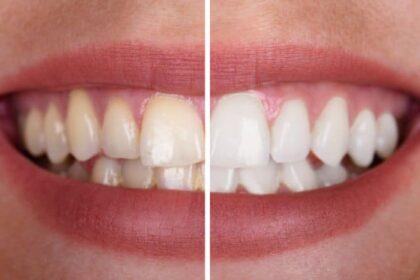Bisphenol A (BPA) is a chemical commonly used in the manufacturing of polycarbonate plastics and epoxy resins, not typically found in shoes, but this synthetic compound can be found in a variety of everyday products, from water bottles and food containers to dental fillings and thermal receipt paper.
Recently, a study conducted by researchers at the University of California detected worrisome levels of BPA in the glues and materials used for the five most popular athletic shoe brands in the United States. This discovery highlights the pervasiveness of this chemical and raises important questions about the potential health risks BPA poses, especially to children.
What Are BPAs?
Bisphenol A (BPA) is an industrial chemical that has been used to make certain plastics and resins since the 1960s. BPA is found in polycarbonate plastics and epoxy resins, which are often used in containers that store food and beverages, such as water bottles, infant bottles, cups, cans, and in the linings of metal food cans. BPA can leach out of these containers into the food or liquid they contain. It is also found in some dental sealants and composites as well as thermal paper including receipts.
The primary health concern with BPA is its potential to disrupt the body’s endocrine system by mimicking the hormone estrogen. BPA is considered an endocrine disruptor chemical. Exposure to BPA, particularly during prenatal development and early childhood, has been linked to a variety of health effects:
- Brain and Behavior Impacts: BPA exposure has been associated with increased anxiety, depression, aggression, hyperactivity, and impaired learning in children.
- Obesity: Some studies have found a connection between BPA exposure and excess weight gain and obesity, especially in children and women.
- Type 2 Diabetes & Heart Disease: BPA may impact glucose metabolism and insulin release, contributing to insulin resistance. It also may raise blood pressure.
- Reproductive Health Problems: BPA exposure has been linked to reproductive issues including infertility, miscarriages, premature delivery, abnormal fetal development, and changes in puberty timing.
- Breast & Prostate Cancer: Some studies have found higher BPA levels in patients with breast and prostate cancers, although more research is needed.
While more research is still needed, there is considerable evidence that BPA exposure, even at low levels, can have negative impacts on human health. Minimizing exposure by choosing BPA-free containers and not microwaving or heating food in plastic is recommended, especially for pregnant women, infants, and young children. Government agencies like the FDA and EPA are working to further regulate the use of BPA.
Popular Shoes & Their Brands Found To Have High Levels Of BPA
The potential health risks posed by BPA exposure through consumer products has recently caught the attention of advocacy groups. The Centers for Environmental Health (CEH), a California-based organization, recently announced legal action against eight prominent activewear brands after finding dangerous levels of BPA in their clothing.
CEH commissioned tests of sports bras and athletic shirts from these popular brands. Shockingly, the results revealed BPA levels over 40 times the legal limit in some products. Brands flagged included sportswear giants Nike, Adidas, and Patagonia. According to CEH, the BPA was likely leaching from the plastics used in the clothing tags and care labels sown into these garments.
“We purposely chose to test sports bras because of all the clothing that has plastic parts, we assumed sports bras would leach less BPA,” said CEO Michael Green. “We were very surprised to find such high levels of BPA leaching out of tags and care labels. Consumers shouldn’t have to choose between protecting their health and being active.”
CEH has demanded these companies reformulate their products to remove all BPA. Failure to do so within 60 days will result in a lawsuit being filed to force compliance. This potential legal action raises the pressure on major clothing brands to acknowledge and address the harms of BPA in their products.
This continuation summarizes the key details from CEH’s announcement, including which brands were implicated, the methodology, and the alarming results that exceeded legal safety limits by leaps and bounds. It uses quotes to emphasize the severity of the findings and need for brands to take action.
Avoiding Exposure Of BPAs
The revelations of substantial BPA contamination in the clothing and footwear of major athletic brands are alarming for consumers. However, there are steps individuals can take to reduce exposure and minimize associated health risks.
First, seek out and purchase BPA-free products whenever possible. Manufacturers are increasingly labeling goods that do not contain BPA. Additionally, avoid plastics marked with recycle codes 3 or 7, as these commonly signify the presence of BPA.
When using any plastics, never microwave food or wash in the dishwasher, as heat can cause BPA to leach out over time. Opt for fresh, whole fruits and vegetables over canned goods. For food storage, use alternate materials like glass, porcelain, or stainless steel containers.
With increased vigilance in product selection and food preparation, individuals can significantly decrease everyday BPA exposure. But pressure must continue on manufacturers and regulators to limit the use of this toxic chemical, especially in products marketed to children. The health of future generations depends on decisive action to purge BPA from consumer goods.
Check Out Xero Brand Shoes For The Best In Comfort, Stability, & Environmental Friendliness
In Conclusion:
The recent findings of alarming levels of the toxic chemical bisphenol A (BPA) in popular athletic shoes and clothing raise serious concerns about consumer safety. Independent testing revealed concentrations of BPA up to 40 times higher than the legal limit in sports bras and shirts from major brands like Nike, Adidas, and Patagonia.
The potential health risks posed by exposure to endocrine-disrupting BPA, particularly during childhood development, are significant. Advocacy organizations like CEH are rightly applying pressure on manufacturers to reformulate products without this hazardous chemical. Brands that fail to comply could face legal action.
While more research on BPA is still needed, consumers should take proactive steps to avoid exposure wherever possible. This includes careful selection of BPA-free goods, as well as precautions during food storage and preparation. With vigilance and vocal demand for change, individuals can protect themselves and prompt the industry-wide shift away from BPA that is so urgently needed.
The true test will be whether apparel and footwear giants accept their responsibility and phase out BPA without delay. The health of millions rests on their willingness to put consumer safety ahead of convenience and their bottom line. For the sake of present and future generations, we must keep the pressure on.
Recommended Reading:
Crocs Shoes Harm Your Posture in This Way And Can Cause Ongoing Pain That a Chiropractor Cannot Fix
Why You Should Stop Wearing Hoka Shoes Immediately (Even Though They’re “Comfortable” To Wear)





